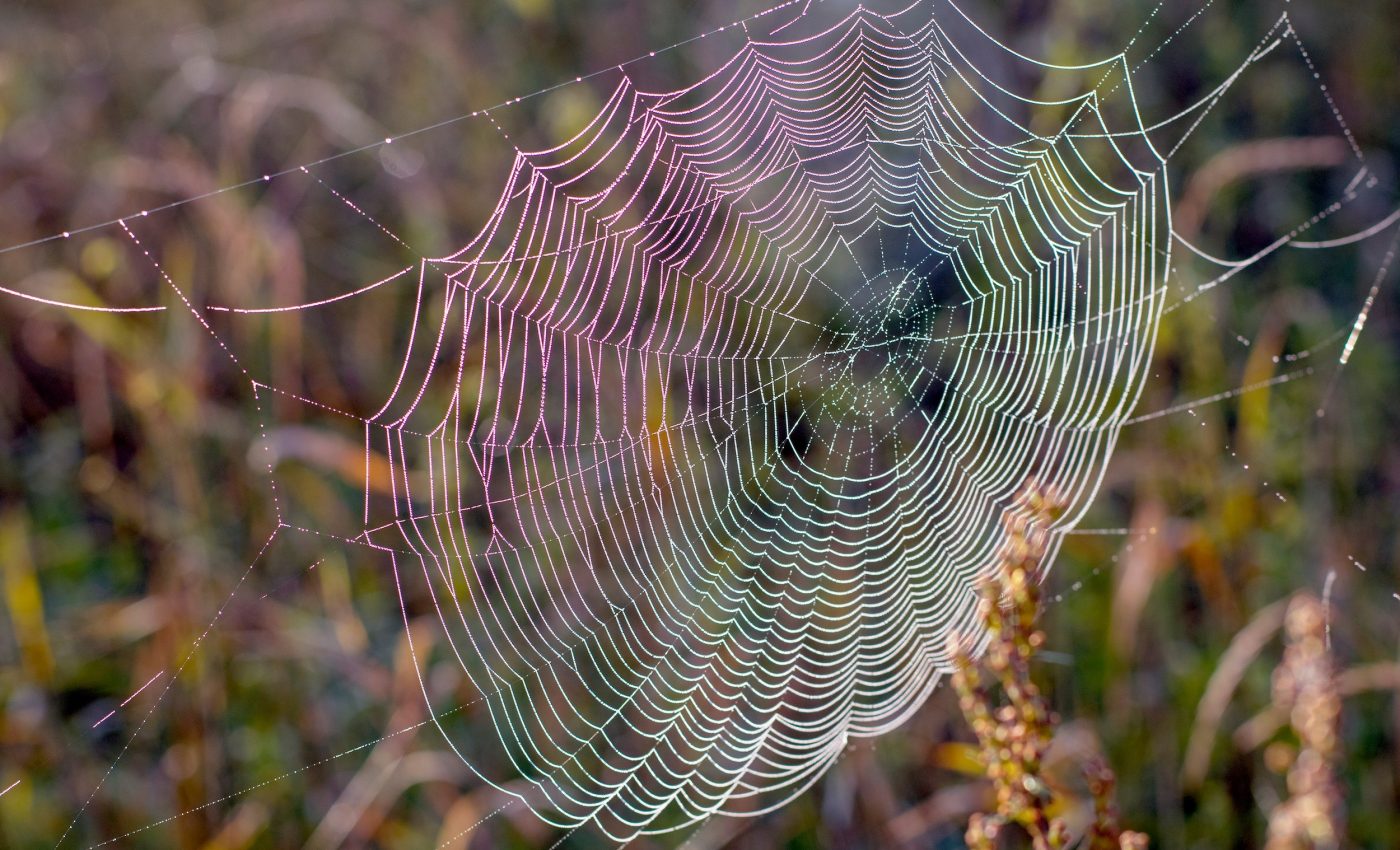
World's first gene-edited spiders spin red silk
Scientists have bred spiders that weave bright red, fluorescent draglines, proving that the animals’ silk can be genetically re-engineered inside the living organism. This finding shows a new path toward designer fibers with tunable strength, elasticity, and surface chemistry.
The experiments were carried out by the Biomaterials research group at the University of Bayreuth. Using the CRISPR-Cas9 gene-editing system, the team inserted a fluorescent marker gene into the spiders’ silk-protein DNA, then confirmed the edit when the offspring produced crimson red threads.
Why spider silk excites engineers
Dragline silk already outperforms many man-made fibers. It resists tearing, stretches without snapping, weighs very little and breaks down harmlessly in nature.
If its molecular recipe can be tweaked at will, future filaments could combine even greater toughness with added functions ranging from antimicrobial activity to electrical conductivity. Over the past decade CRISPR-Cas9 has become biology’s precision scalpel.
The enzyme-guide complex targets chosen DNA sites, cuts them, and lets the cell’s own repair crew delete unwanted sequences or patch in new ones. The method has been applied to plants, insects, mice and more, yet spiders had remained untouched.
“Considering the wide range of possible applications, it is surprising that there have been no studies to date using CRISPR-Cas9 in spiders,” said senior author Thomas Scheibel, a professor of biochemistry at Bayreuth.
From egg injection to glowing fiber
Scheibel and doctoral researcher Edgardo Santiago-Rivera mixed the gene-editing components with a sequence coding for a red fluorescent protein. They injected this cocktail into unfertilized spider eggs and later mated the females.
Because the edit happened before fertilization, every cell in the brood carried the new blueprint. When the juveniles spun safety lines, the filaments glowed scarlet under blue light, confirming a successful gene knock-in.
“We have demonstrated, for the first time worldwide, that CRISPR-Cas9 can be used to incorporate a desired sequence into spider silk proteins, thereby enabling the functionalization of these silk fibers,” Scheibel said.
“The ability to apply CRISPR gene-editing to spider silk is very promising for materials science research. For example, it could be used to further increase the already high tensile strength of spider silk.”
Lessons learned from red spider silk
The fluorescent marker acts as a beacon, showing where and how the modified proteins fold into the fiber. That view should help unravel the still-mysterious link between amino-acid sequence, spinning process, and macroscopic performance.
With the roadmap clearer, scientists can test added modules that stiffen the thread, alter its stickiness or carry therapeutic payloads.
Artificial vs. natural spider silk
Earlier attempts to engineer silk relied on copying genes of spiders into bacteria, yeast, plants or even goats. While those hosts churn out raw protein, the artificial threads seldom match the natural product because spinning in air differs from extrusion through a spider’s duct.
Editing the spider itself preserves the native assembly line, letting researchers fine-tune properties without losing the fiber’s intricate nanostructure.
Balancing innovation and ecology
The gene-edited arachnids remained confined to secure laboratories, and the team stresses that large-scale production will require strict containment.
Spiders play key roles in ecosystems, so any field release of modified lines would demand careful risk assessment. For now. the focus lies on fundamental insight and small-batch, high-value uses such as surgical sutures or micro-mechanical springs.
The next web strands to come
Having proved that complex proteins can be knitted into dragline silk, the Bayreuth group plans to insert sequences that enhance strength, adjust elasticity, or add sensing abilities.
Marker colors beyond red could enable multicolored performance mapping. Researchers also hope to explore the spider’s six other silk types – each specialized for tasks like web capture or egg protection – to see how far CRISPR can stretch nature’s design space.
Turning point for sustainable fibers
By merging a molecular editing toolkit with the planet’s premier fiber spinner, the study opens a fresh chapter in biomaterials science. It hints at a future where customized, biodegradable threads are spun at ambient temperature by miniature eight-legged factories – no smokestacks or petrochemicals required.
For now, a vivid red glow in a strand of spiders silk stands as proof that the possibilities are real, and only beginning to be woven.
The study is published in the journal Angewandte Chemie.
—–
Like what you read? Subscribe to our newsletter for engaging articles, exclusive content, and the latest updates.
Check us out on EarthSnap, a free app brought to you by Eric Ralls and Earth.com.
—–













